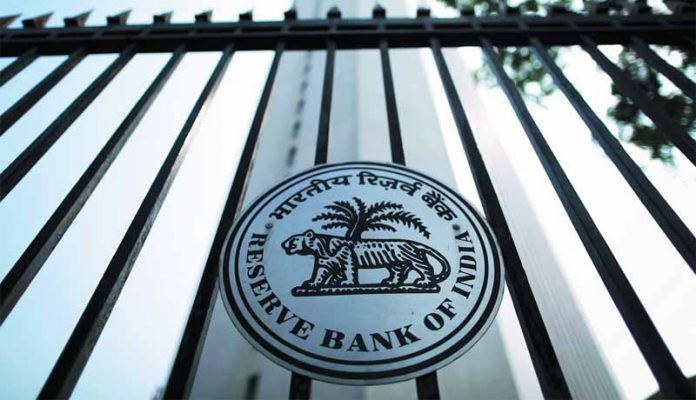This article was written by Suryanshi Bothra. This article discusses in detail the purpose, importance and benefits of Form 10F under Income Tax. The details required in filing Form 10F and the procedure for filing the form are clarified as well. The article also discusses the Tax Residency Certificate and Digital Signature Certificate required when claiming Double Tax Avoidance Agreement benefits.
Table of Contents
Introduction
Increasing globalisation and expansion of global trade has led to the creation of a complex system of international taxation. Non-resident taxpayers often have to face the challenges that come with avoiding double taxation on their incomes. Governments have entered into agreements that can help taxpayers, known as Double Tax Avoidance Agreements.
It helps the taxpayer from being taxed under the jurisdiction of both countries. To avail of the benefits of this agreement, compliance with all the specific regulations is essential. In India, one of the important requirements for availing of such benefits is filing Form 10F.
What is Form 10F of Income Tax, 1961
Form 10F is a self-declaration tax form for taxpayers who are individuals or entities whose primary source of income is not from India. It is used by them to claim benefits under the Double Taxation Avoidance Agreement (hereinafter referred to as ‘DTAA’) when their Tax Residency Certificate (hereinafter referred to as ‘TRC’) lacks some important details. According to the Central Board of Direct Taxes (hereinafter referred to as ‘CBDT’), through Form 10F, there is no need to have a Permanent Account Number to e-file on the income tax portal.
In July 2022 in a Notification by the Directorate of Income Tax, electronic submission of Form 10F was mandated for taxpayers. In the subsequent notices, the CBDT introduced partial relaxations on the submission of Form 10F. Anyone who wasn’t required to have a PAN under the Income Tax Act, 1961 and Income Tax Rules, 1962, was provided relaxations in filing Form 10F.
These relaxations were only applicable for electronic submission and manual filing of Form 10F remained mandatory. With the introduction of e-filing of Form 10F on the income tax portal, the CBDT streamlined the process for all non-residents, including those who didn’t possess a PAN. The form can now be filled out by simply creating an account.
Form 10F download
Download Form 10F from here.
TRC and DTAA
A Tax Residency Certificate is a document issued by the non-resident taxpayer’s home country that confirms the tax status of the resident. Form 10F supplements the information in the Tax Residency Certificate. TRCs don’t usually have a standard format. However, while looking at claims against the benefits of DTAA, a few things that are looked at are:
- Status of the assessee, whether they are an individual, a company or a form.
- Nationality of the individual, country or territory of incorporation of companies or registration for others.
- Tax Identification Number (TIN) or Unique Identification Number (UID) in the country of residence.
- The period in which the residential status mentioned in TRC is applicable.
- Address of the taxpayer in the country during the period of TRC.
Section 90 and Section 90A of the Income Tax Act discuss provisions allowing taxpayers to claim relief from double taxation in cases where the incomes are taxed in two countries. It is applicable for both residents and non-residents. India has a huge network of tax treaties; it prevents tax evasion and, by avoiding double taxation, facilitates business. Dividends, interests, salary income and royalty payments are a few examples of savings in taxes through DTAA.
Documents required for filing Form 10F
The documents required usually are:
- The status of the non-resident taxpayer,
- Nationality or country of incorporation,
- Tax identification number of home country,
- Period for the applicability of TRC,
- Address in the home country,
- PAN Card,
- Digital Signature Certificate,
- Proof of nationality.
Is it mandatory to file Form 10F online and is PAN card a requirement
Filling out Form 10F is only required when the below-mentioned details are missing from TRC. However, it is advisable for all taxpayers seeking relief under DTAA to seek and fill out Form 10F. The requirement for a PAN card depends on various factors. The following non-residents are required to obtain a PAN:
- Non-residents whose total income exceeds the exception limit, which is not chargeable to income tax.
- Non-residents carrying out business or professions that have turnovers, total sales, or gross receipts exceeding five lakh in any previous years.

There are some specific exemptions for non-residents. It provides exemptions to non-residents who have invested in specific funds. To avail of these exceptions, the following criteria need to be fulfilled:
- The only source of income from India is from investments in the specified fund in the previous year.
- When a non-resident makes an investment in the specified fund, the fund must deduct tax from the income before paying it. The Indian government receives this deducted tax and the rates of tax deduction are defined in Section 194LBB of the Income Tax Act.
- The non-resident furnishes the following details to the fund.
- Name, email and contact number.
- Address in India or specified territory outside India.
- Declaration of residency, which proves that he/she is a resident of a country or specifies territory outside India.
- Tax Identification Number or Unique Identification Number.
Also, non-residents don’t need a PAN if they are foreign investors making capital asset transactions as described under Section 47(viiab) of the Income Tax Act listed in an International Financial Services Centre (IFSC) or Recognised Stock Exchange (RSE).
Requirement of Digital Signature Certificate
A Digital Signature Certificate (hereinafter referred to as ‘DSC’) is required to digitally sign Form 10F using a DSC. A Digital Signature Certificate is an electronic form of the physical signature. It helps the authorities to authenticate and verify the identity of the person signing the document.
These have to be issued by certifying authorities within India. It ensures the integrity and authenticity of digital documents. It normally includes the name, email address, country, public key and the validity period of the certificate. For filing Form 10F, DSC is a secure and legally binding way of submitting it online.
It is mandatory for taxpayers to sign the form with a DSC as it provides a higher level of security and reduces the risk of forgery. It becomes even more important for those without a PAN card. It eliminates the need for physical signatures and eliminates postal delays.
E-filing of Form 10F of Income Tax, 1961
- 1st Step: On the official e-filling portal of Income Tax, log in with your PAN and user ID. If you don’t have an account, register.
- 2nd Step: Select the e-file option available on the dashboard.
- 3rd Step: From the e-file drop-down option, select “Income Tax Forms.” Choose “File Income Tax Forms.”
- 4th Step: On the next page, 3 options will be displayed. First, “Persons with Business” or “Professional Income,” second, “Persons without Business/Professional Income,” and third, “Persons not dependent on any Source of Income” (Source of Income not relevant). Out of these, choose the third option.
- 5th Step: On the same page in the 3rd column, you will find the option to e-file Form 10F. Click on File Now.
- 6th Step: There will be a dropdown menu to select the assessment year for which you want to obtain tax relief.
- 7th Step: Have your TRC form ready, as it will be helpful in filling out Form 10F. Click on the “let’s get started tab”. Please read the instructions carefully.
- 8th Step: Type the details of the authorised signatory for individual entities. Select Section 90 or Section 90A from the dropdown.
- 9th Step: On the next page, PAN and status will be pre-filled; update the nature of the information section.
- 10th Step: In the third point, from the dropdown, select the country or territory of incorporation or registration.
- 11th Step: In the next step, enter the Tax Identification Number or a Unique Number that helps the government identify the taxpayer.
- 12th Step: Select the period and fill in the address of the country or territory outside India.
- 13th Step: Fill in the address of the government from whom the TRC is obtained.
- 14th Step: Lastly, provide verification and attach the TRC. Please ensure that the size of each attachment should not exceed 5 MB. All the attachments together cannot exceed 50 MB and should only be in zip and pdf.
Consequences of not filing Form 10F

Form 10F is crucial to avail the benefits under the Double Taxation Avoidance Agreement. The following could be some of the consequences of not filing a Form 10F.
- The taxpayer would not be able to claim benefits under DTAA, which can help lower the rates of tax deducted at source (TDS) on certain incomes. If this form is not filled out, then the payer is obligated to deduct TDS at the standard rate and, in some cases, even higher under the Indian tax laws. This can be a steep increase from the DTAA rates.
- Without filing this form, the taxpayer would be subject to full taxation, which if filed would not be the case. They would be taxed even on the incomes that are exempt from taxation or are taxed at a reduced rate as per the DTAA.
- If a taxpayer claims reduced taxes without filing Form 10F, the Income Tax Department could treat that taxpayer as an ‘assessee in default’. Additional penalties and liabilities will have to be paid by the taxpayer in this case.
- To facilitate remittance, it is essential for all non-resident taxpayers to comply with documentation requirements. Banks and financial institutions demand proper documentation to process remittances. Not filing essential documents such as Form 10F could make the process of transferring funds from India to the resident’s home country harder.
- The income tax department has the authority to issue notices or initiate proceedings of non-compliance against taxpayers. It could affect the taxpayer’s ability to obtain a tax clearance certificate, which becomes essential in some financial and legal transactions.
- The tax department can also impose interest under Section 234B and Section 234C of the Income Tax Act. Section 234B deals with the default of an advance tax instalment and comes with an interest rate of 1% monthly or part of a month on the outstanding amount of advance tax. Section 234C of the Act specifically applies in cases of failure to pay tax liabilities after being assessed by the Income Tax Department. Underpayment or delayed payment of taxes can lead to the application of the sections. Additionally, the department may also levy penalties under Section 271C and Section 276B. These sections include provisions for prosecution in cases of failure to pay taxes. It could be used to penalise the failure to deduct the correct TDS amount.
- Non-filing of Form 10F can lead to non-residents paying higher tax rates on income from investments. Some investments are exempt from taxation under DTAA; without filing Form 10F they won’t be able to avail of these exemptions. It can have the impact of deterring future investments in India, which can affect the overall business strategy.
Benefits of filing Form 10F of Income Tax, 1961
Availing the benefits of DTAA is possible only by obtaining a TRC and then filing Form 10F providing the remaining information. The following are some of the most important benefits of filing Form 10F:
- Filling out Form 10F allows non-residents to benefit from lower tax deducted at source rate on incomes from various sources such as interest, dividends and royalties. As per the Double Taxation Avoidance Agreement, TDS rates on the above-specified incomes are reduced compared to the standard applicable rates under the Income Tax law. It becomes possible to claim these benefits, thus avoiding higher taxes. These benefits are particularly important to foreign investors because they increase their net income from India.
- Filing Form 10F is essential as per Indian tax law and non-compliance can lead to denial of benefits from DTAA. It safeguards the taxpayers from future assessments and penalties.
- Accurately filing Form 10F can provide the tax authorities with all the necessary information, ensuring that they can process the returns quickly and issue refunds quickly if it is applicable. It prevents unnecessary delays and ensures that there are minimal disruptions to financial planning.

Conclusion
Form 10F is essential to avail full benefits under the Double Taxation Avoidance Agreement. It helps furnish all the information missing in the TRC. It helps non-residents optimize their tax obligations. Staying informed about the process of availing of these benefits and compliance with all regulations can help in efficient tax planning and financial management. E-filing of Form 10F has made it more convenient and accessible.
Frequently Asked Questions (FAQs)
Is it mandatory to file Form 10F online?
It is mandatory to file Form 10F electronically for non-residents with or without a PAN in India. This requires the use of other necessary documents and DSC. It has streamlined the process and made it faster.
What is the difference between Form 10F and TRC?
TRC serves as conclusive proof of residency, while Form 10F provides supplementary information specified as per DTAA. It is a self-declared document submitted by a non-resident and TRC is issued by the tax authorities of the country. TRC validates the claim under DTAA. Form 10F can be filed electronically.
What is Form 10F used for?
Form 10F is a self-declaration form used with TRC to claim the benefits under DTAA. It provides additional details required by Indian tax authorities.
References
- https://www.incometax.gov.in/iec/foportal/sites/default/files/2023-03/Refer%20Notification.pdf
- https://rsmcanada.com/insights/tax-alerts/2023/New-mandatory-e-filing-Form-10F-non-residents-India.html
Students of Lawsikho courses regularly produce writing assignments and work on practical exercises as a part of their coursework and develop themselves in real-life practical skills.
LawSikho has created a telegram group for exchanging legal knowledge, referrals, and various opportunities. You can click on this link and join:
Follow us on Instagram and subscribe to our YouTube channel for more amazing legal content.
 Serato DJ Crack 2025Serato DJ PRO Crack
Serato DJ Crack 2025Serato DJ PRO Crack









 Allow notifications
Allow notifications



